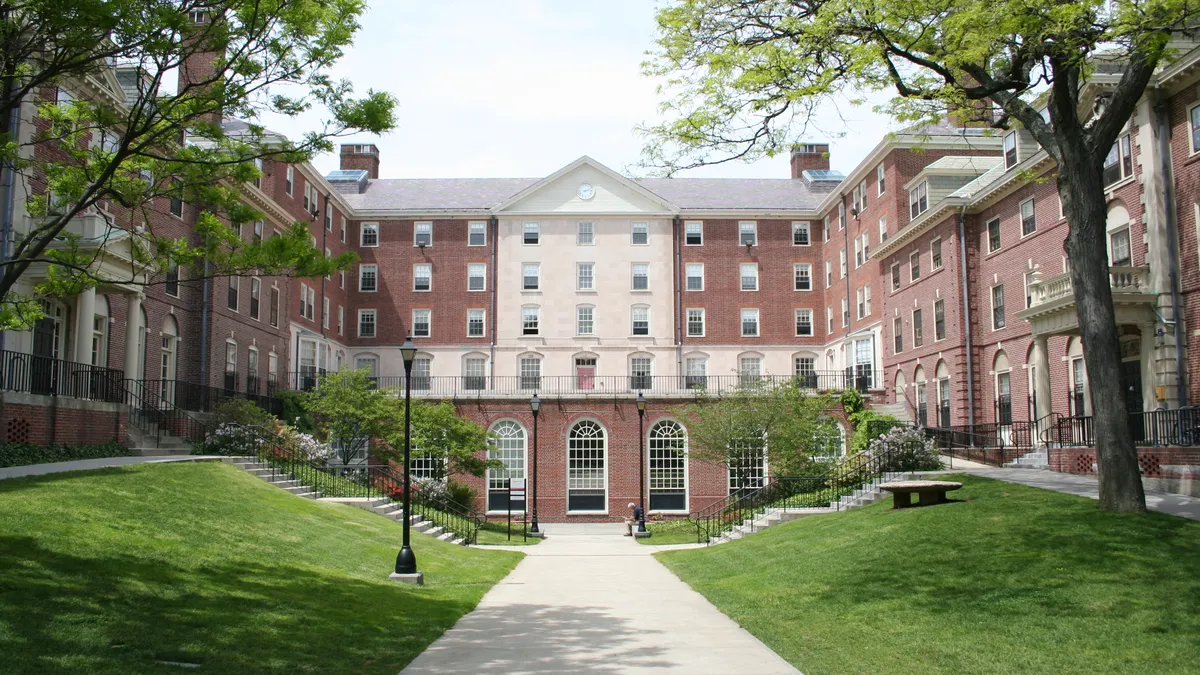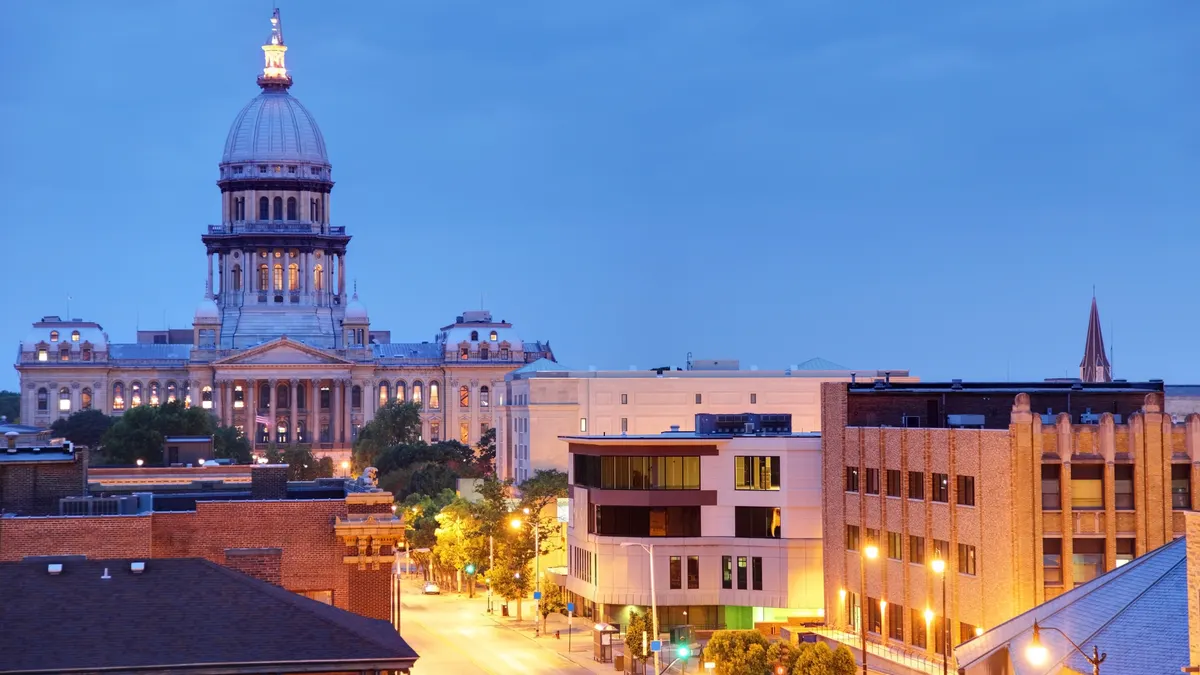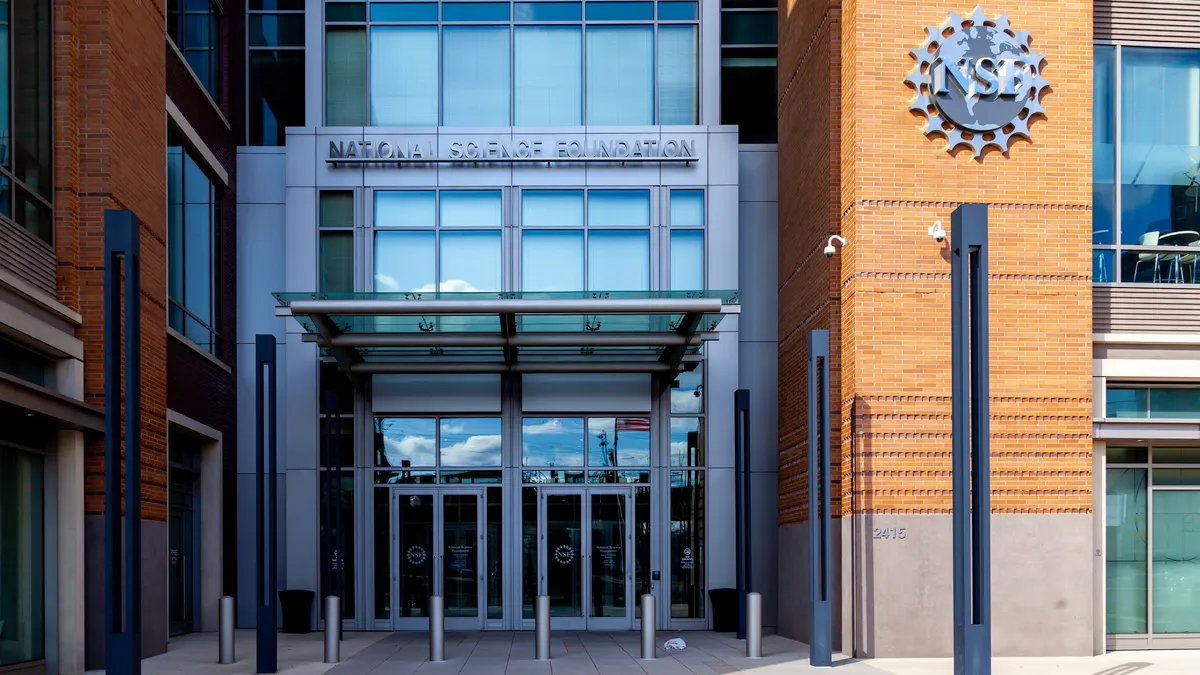Dive Brief:
-
State support for higher education increased 2.4% per full-time student in the 2019 fiscal year, though the pandemic will likely cause it to decline again, according to a new report from the State Higher Education Executive Officers Association (SHEEO).
-
Despite the increase in funding, student tuition accounts for more than 50% of institutions' revenues in more than half of states, and state appropriations remain 8.7% below 2008 levels.
-
The report comes as public universities brace for a dip in state support due to the economic fallout from the pandemic.
Dive Insight:
Although the boost in state appropriations would suggest a healthy funding outlook for the nation's public colleges, the reality is more complicated. Public institutions have only recovered two-thirds of the state funding they lost during the Great Recession, even after seven years of growth.
"We're coming out of 10 years of a recovery since the Great Recession, and state funding is still so far below where it has been historically," said Sophia Laderman, a senior policy analyst at SHEEO, in an interview with Education Dive. "We're essentially worse off in public higher education than we ever have been before as we go into a recession."
States' recoveries have varied widely. While seven states restored their higher ed appropriations to pre-recession levels, seven other states remain more than 30% below their pre-2008 amounts. Those are Alabama, Arizona, Delaware, Louisiana, Mississippi, Oklahoma and Pennsylvania.
With prominent economists declaring that a recession has already begun, states with middling support are in a "precarious situation," Laderman noted.
As states pulled back their support, students and their families picked up a larger share of the bill. In Arizona, for example, the share of colleges' revenue paid by students increased from 36.4% in 2008 to 61.9% in 2018.
Arizona's attorney general is pushing back against that trend. In a lawsuit against the state's board of regents, he alleges that the steep increase in tuition and fees at Arizona's public universities violates the state constitution's mandate to keep higher ed "as nearly free as possible."
Although states have pulled back support for higher ed, they tend to protect student financial aid during economic downturns. From 2008 to 2012, student aid increased 6.5% while appropriations fell 23.9%.
However, these levels differ by state. New Hampshire didn't allocate any financial aid to students in the 2019 fiscal year after ending its program in 2011, while Louisiana spent more than one-third of education appropriations on student aid.
Even so, the southern state has caught flak for its TOPS program, a merit-based scholarship for students who attend public colleges. White and wealthy students disproportionately receive the scholarships, even though the state has been cutting funding to institutions that serve a high share of disadvantaged students.
Colleges have also been spending more on merit scholarships. A recent analysis of 339 public universities from New America, a left-leaning think tank, found their non-need-based aid grew from an inflation-adjusted $1 billion in 2001 to $3 billion in 2016-17.
The drop-off in state support fueled some of these trends, with colleges attempting to make up for lost revenue and boost their profiles by recruiting wealthier students with higher test scores.










